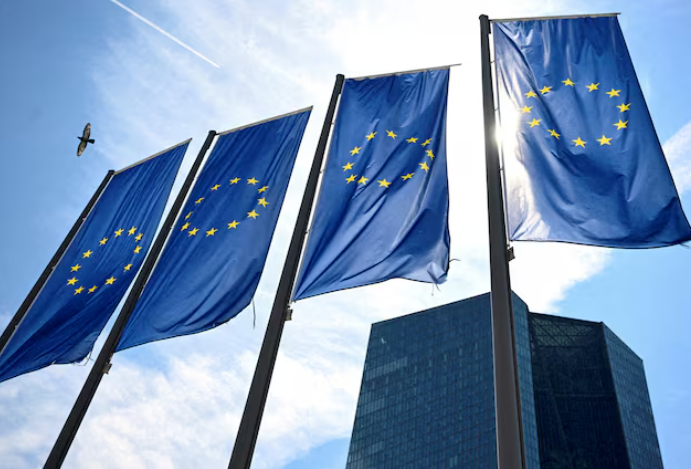
Recently, sources revealed that the European Central Bank has set up a special working group led by Vice President Luis de Guindos to jointly discuss with the governors of the central banks of Germany, France, Italy and Finland to simplify the European banking regulatory rules. This move is aimed at addressing the current problems of obstruction of monetary policy transmission mechanism and distortion of bank profit model, and promoting the eurozone financial system to enhance international competitiveness and policy flexibility.
Since the epidemic, in order to stimulate economic recovery, the European Central Bank has maintained ultra-low interest rates or even negative interest rates for a long time, injecting more than 2 trillion euros of liquidity into the banking system. However, with the intensification of global inflationary pressures in recent years, the European Central Bank has been forced to start a rapid interest rate hike cycle, resulting in banks facing the dilemma of "interest rate mismatch": on the one hand, if the large amount of cash they hold is deposited in the central bank, they can obtain risk-free returns; on the other hand, the weak credit demand in the real economy has reduced the income from lending. This "lying and earning" model has caused dissatisfaction among regulators. Policymakers are worried that banks hoarding funds will weaken the efficiency of monetary policy transmission, while huge interest expenses will also increase the financial burden of the central bank.
To resolve the above contradictions, the task force has listed the adjustment of the rules of targeted long-term refinancing operations (TLTRO) as the core of the reform. It is reported that policymakers have discussed five options, including directly modifying the TLTRO terms and adjusting the deposit interest rate grading mechanism, but finally focused on three alternative options: one is to link the TLTRO deposit rate with a lower minimum reserve rate; the second is to establish a tiered interest rate system and impose a punitive interest rate on excess deposits; the third is to force banks to increase credit supply through legal means. Although the details of the plan have not yet been made public, the core goal is to compress the risk-free arbitrage space of banks and force them to reinvest funds in the real economy.
The reform is facing multiple challenges. On the legal level, some plans may touch on the existing provisions of the EU banking regulatory framework and need to be approved by the Brussels legislature; on the political level, the compression of banking profits may cause differences among member states, especially putting pressure on banks in southern European countries that rely on interest income; on the economic level, if the reform is too strong, it may inhibit banks' lending capacity, which is contrary to the current economic recovery needs. In addition, how to balance the simplification of rules and the maintenance of financial stability also tests the wisdom of supervision. Some analysts pointed out that the European Central Bank may tend to take gradual adjustments, taking into account both policy effects and market tolerance.
In addition to resolving short-term contradictions, the deeper goal of this reform is to enhance the international competitiveness of the eurozone banking industry. In recent years, the differences in banking supervision between Europe and the United States have widened, and Europe's strict capital requirements and complex rules system have been accused of restricting the vitality of the industry. Central bank governors such as Spain and Germany have repeatedly called for simplifying rules to prevent European banks from being at a disadvantage in competition with their counterparts in the United States and Britain. In this context, this reform is not only a correction to the current monetary policy, but also a key step in reshaping the competitiveness of the eurozone financial system. Although the reform path is full of games, the determination of the regulators to push the banking industry back to serve the real economy has been shown, and its subsequent impact may reshape the European financial ecology.

The 2025 US holiday shopping season was supposed to be a double celebration for both merchants and consumers. However, the reality is shrouded in a "bill chill."
The 2025 US holiday shopping season was supposed to be a do…
On November 5th, the US federal government entered its 36th…
JPMorgan Chase CEO Jamie Dimon recently made important asse…
When the US Senate passed a resolution with 51 votes in fav…
Recently, according to Teslarati, Tesla announced that the …
Nikkei Group, the Japanese business information giant that …